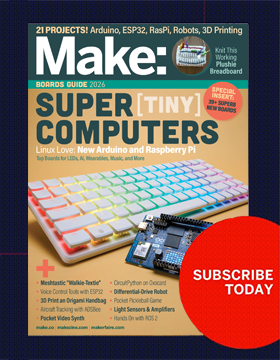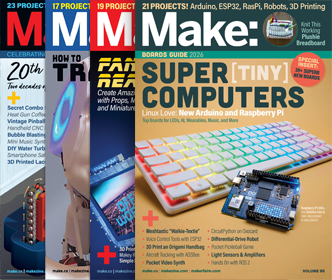This is a limited edition 1.000 kg solid gold bar from German designer Martin Saemmer. Its shape is mathematically interesting because, at least in its ideal form, it will “develop” its entire surface area when rolled. In other words, if you were to let it roll down an inclined plane covered with paint, its entire surface would be covered when it got to the bottom. It belongs to a class of shapes, all sharing this property, which can be characterized as the convex hull of two perpendicular circles or sectors, which is a fancy way of describing the surface you’d get if you were to shrink-wrap two disks positioned at right angles to one another on the same axis. Oloids and sphericons are members of the same class, but each term implies a specific relationship between the radii of the two disks and the distance between their centers. The familiar two-circle roller or wobbler (an example of which we showed you how to make make from two coins back in MAKE 15) is basically the same thing but without the “shrink-wrap.”









